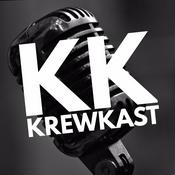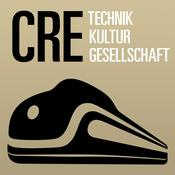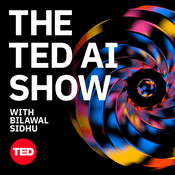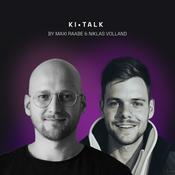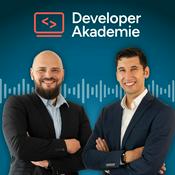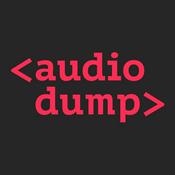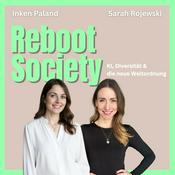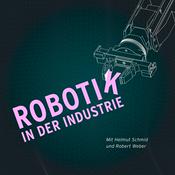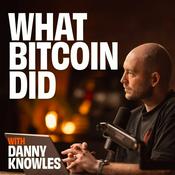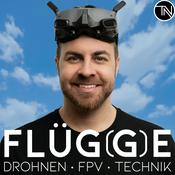Verfügbare Folgen
5 von 229
- Forward Deployed Engineer: The Role Up 800% (And How to Get It)Traditional software engineering job listings have dropped by 70%, yet Forward Deployed Engineer (FDE) roles have exploded by over 800% this year. We sit down with Mo Fagir, Principal Technical Consultant at ServiceNow, to break down exactly why this shift is happening and how you can pivot your career to ride this AI adoption wave.In this episode, we cover:The massive market shift: Why "pure coding" jobs are declining while FDEs are booming.The exact technical stack and soft skills required to land these high-paying roles.How to overcome imposter syndrome and build a portfolio that gets you hired, even as a junior.Why this isn't just a trend, but the future of how engineering delivers value.Connect with Mo Fagir:https://www.linkedin.com/in/mo-nour-tarigTimestamps:00:00:00 - Intro00:01:14 - Why software jobs dropped 70% while FDEs grew over 800%00:02:55 - Why companies can't implement AI without Forward Deployed Engineers00:05:36 - Is this career path safe for traditional software engineers?00:07:54 - The exact technical stack you need to master today00:10:48 - Moving from engineering scope to product centric thinking00:16:15 - Can juniors and early career devs get hired as FDEs?00:19:12 - How to build a portfolio that gets you hired00:22:17 - Why passion and attitude beat experience in the AI era00:24:33 - How to train yourself to have a sense of urgency00:29:05 - Can introverts succeed in client facing engineering roles?00:32:17 - Lessons learned from interning at NASA and researching AI00:35:09 - Are we in an AI bubble that will burst soon?00:40:34 - Does becoming an FDE risk vendor lock-in for your career?00:43:36 - Final advice for engineers entering the 2025 job market#ForwardDeployedEngineer #FDE #SoftwareCareers--------45:33
- AI Won't Replace Software Engineers, But This Might (CEO Perspective)If you think your value as a software engineer comes just from writing code, you're already at risk.In this episode, Outsystems CEO Woodson Martin reveals why AI isn't the real threat to your career. Irrelevance is. He explains that writing code is now only 20% of the job, and the engineers who thrive are the ones who master the other "80% that matters."We cover:The billions of lines of ungoverned code AI is creatingWhy the "Forward Deployed Engineer" model is changing team structuresThe 80% of engineering work that AI cannot replaceHow to shift from coder to problem solver who drives business revenueA CEO's advice for building a lasting engineering careerThis is a reality check for developers, tech leads, and architects who want to stay relevant as agentic AI reshapes the industry.Connect with Woodson:https://www.linkedin.com/in/woodsonmartinTimestamps:00:00:00 - Intro00:00:56 - How Agentic AI keeps the human in the loop00:01:55 - Real-world example: Automating the grunt work00:04:17 - How engineers are using agents internally00:05:52 - Blending Low-Code and High-Code for complex systems00:08:28 - Is a Low-Code career a trap for engineers?00:10:50 - Will AI make software engineering obsolete?00:12:09 - The 80/20 Rule: Why code is only 20% of your job00:13:14 - Layoffs vs. the rise of the solo entrepreneur00:15:18 - Career advice for a volatile tech market00:17:02 - How to retain top talent and keep them happy00:20:10 - Why we radically changed our engineering team structure00:24:33 - The "Forward Deployed Engineer" model explained00:27:08 - Outsystems vs. OpenAI: The future of platform building00:31:45 - The tech debt problem no one's talking about00:34:23 - The one thing that keeps you from becoming irrelevant#SoftwareEngineering #CareerAdvice #AIAgents--------36:49
- How We Get More Done with Fewer EngineersWhat if you could build a multi-million dollar software company where only 10% of your employees are developers? AFAS, a company with hundreds of millions in revenue, does exactly that with a lean team of just 70 engineers. In this episode, Engineering Manager Michiel Overeem pulls back the curtain on their unconventional strategies for achieving massive productivity with a surprisingly small team.In this episode, we cover:Why standardization is their secret weapon for efficiency.How they thrive without traditional Scrum ceremonies.The two distinct types of engineers they hire for success.The surprising details of their 4-day work week (paid for 5).This video is for engineering leaders and software developers who want to learn proven, counter-intuitive strategies to build hyper-effective teams and get more done, regardless of team size.Connect with Michiel:https://www.linkedin.com/in/movereemTimestamps:00:00:00 - Intro00:01:22 - The "10% Engineering" Paradox at a €100M+ Company00:03:20 - How Standardization Allows a Small Team to Do More00:04:27 - The Two Types of Engineers Every Successful Company Needs00:06:46 - Why Feeling Responsible is More Powerful Than Being Responsible00:09:33 - The Secret Sauce of High-Performing Engineering Teams00:11:52 - A Simple Method to Keep Engineers Connected to Customers00:14:22 - What We Look For When Hiring New Engineers00:17:09 - The #1 Red Flag That Will Get You Rejected in an Interview00:19:33 - Why We Don't Use Scrum (And What We Do Instead)00:22:51 - The Power of Strong, Decisive Leadership00:24:13 - How Our 4-Day Work Week Actually Works00:26:55 - Our Approach to Adopting AI Tools like Copilot00:28:19 - Final Advice: The Best Way to Grow Your Career#EngineeringCulture #Productivity #SoftwareDevelopment--------28:52
- How to Think About System Design (GitHub Engineer's Perspective)System design interviews often focus on theoretical complexity, but how do Senior Engineers at GitHub actually approach scaling? In this episode, Bassem Dghaidi breaks down how to think about system design when real business impact is on the line.We discuss why "simple is complicated enough," the dangers of premature scaling, and why vertical scaling often beats complex distributed systems. If you want to bridge the gap between theory and practice, and understand how to design software that actually serves the business, this conversation is for you.In this episode, we cover:- The "Order of Magnitude" rule for scaling systems- Why GitHub often runs millions of requests on simple architecture- How to communicate technical constraints to non-technical stakeholders- Why 90% of Bassem's code is now written by AI agentsConnect with Bassem Dghaidi:https://www.linkedin.com/in/bassemdghaidyTimestamps:00:00:00 - Intro00:00:48 - Theory vs. Practice in System Design00:02:06 - The Startup That Almost Failed via Kubernetes00:03:33 - How GitHub Scales (It's Simpler Than You Think)00:05:20 - The Underrated Power of Vertical Scaling00:08:23 - Why Big Tech Interviews for Scale You Don't Need Yet00:10:39 - Software Evolves, It Isn't Just "Built"00:11:53 - Only Design for the Next Order of Magnitude00:15:39 - Stop Building Generic Frameworks00:18:17 - "Hacking" the System Design Interview00:21:29 - Translating Tech Problems to Business Risks00:27:37 - Layoffs & Engineering Efficiency00:29:41 - Proving Your Impact with Numbers00:31:00 - Professional Engineering vs. Hobby Coding00:32:19 - "Simple is Complicated Enough"00:35:03 - The Rise of AI Coding (The Motorcycle Analogy)00:37:30 - "90% of My Code is Written by AI Agents"00:41:04 - How to Become a Great Engineer#SystemDesign #SoftwareEngineering #GitHub--------46:01
- From Backend Engineer to Head of Mobile (Lessons from Uber)What does it take to build a career as a mobile engineer when AI is changing everything? Pasha Mazurin shares how he went from Java backend engineer to Head of Mobile, why he only joins mobile-first companies, and how AI-assisted development brought the joy back to his work. This isn't theory, it's real lessons from 15+ years in the field and now learning Android at a senior level.In this episode, we cover:AI-assisted mobile development workflow (the four-window tmux setup)Why mobile-first companies operate completely differentlyHiring for strengths, not lack of weaknesses (lessons from Uber)Leading as a hands-on engineer who stays in the trenchesWhy React Native doesn't feel native and when to go fully nativeWhether you're building your mobile engineering career or figuring out how AI changes your workflow, this conversation offers practical perspectives on staying effective and making intentional career choices.Connect with Pasha:https://www.linkedin.com/in/kovpasTIMESTAMPS:00:00:00 - Intro00:01:13 - Using AI as Your Junior Engineer Teammate00:02:33 - The Four-Window Tmux Setup for AI-Assisted Development00:04:29 - Managing Multiple Features with Git Worktrees00:05:52 - Why AI Makes You a Better Code Reviewer00:08:07 - Setting Up Markdown Files for AI Context00:11:54 - Small Teams vs Big Companies: Where Mobile Engineers Thrive00:16:26 - The Mobile-First Company Filter That Shapes Every Career Move00:18:31 - Being Nice: The Underrated Career Skill00:20:29 - Pick Your Battles: When to Disagree and Commit00:22:52 - Hire for Strengths, Not Lack of Weaknesses00:25:16 - Is Software Engineering Still a Good Career Choice?00:28:19 - How I Accidentally Became a Mobile Engineer00:31:41 - Why I Only Work on Apps That Matter to People00:35:08 - Joining Uber During the Big Mobile App Rewrite00:39:12 - Leading Without Rank: Managing as a Hands-On Engineer00:43:01 - How AI Changed Mobile Development in 12 Months00:46:09 - The Communication Skills That Make or Break Engineers00:49:59 - It's Okay to Say You Don't Understand00:51:30 - Working on Payments: Building Critical App Infrastructure00:53:25 - Why React Native Doesn't Feel Native (And What Works Better)00:55:36 - Can You Switch Specializations Without Taking a Pay Cut?00:57:02 - How Learning Android Brought the Joy Back--------58:34
Weitere Technologie Podcasts
Trending Technologie Podcasts
Über Beyond Coding
For software engineers ready to level up. Learn from CTOs, principal engineers, and tech leaders about the skills beyond coding: from technical mastery to product thinking and career growth
Podcast-WebsiteHöre Beyond Coding, Freak Show und viele andere Podcasts aus aller Welt mit der radio.de-App
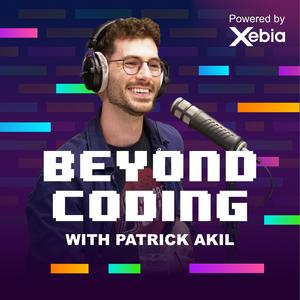
Hol dir die kostenlose radio.de App
- Sender und Podcasts favorisieren
- Streamen via Wifi oder Bluetooth
- Unterstützt Carplay & Android Auto
- viele weitere App Funktionen
Hol dir die kostenlose radio.de App
- Sender und Podcasts favorisieren
- Streamen via Wifi oder Bluetooth
- Unterstützt Carplay & Android Auto
- viele weitere App Funktionen


Beyond Coding
Code scannen,
App laden,
loshören.
App laden,
loshören.







